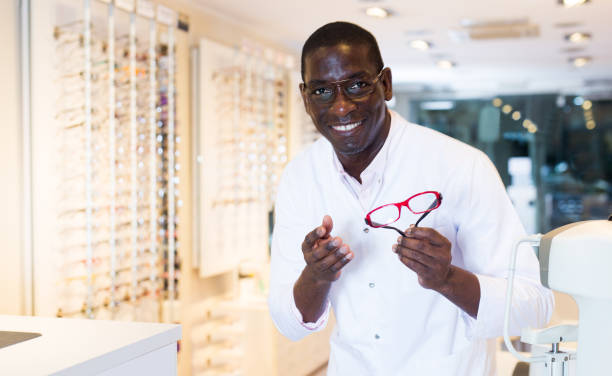If bright lights, glare, or sunlight cause discomfort or agony in your eyes, you may have photophobia, a disorder characterized by light sensitivity. While sometimes misinterpreted, photophobia is a typical symptom associated with a variety of eye disorders and neurological issues. Fortunately, opticians may diagnose photophobia and offer eyewear to help alleviate the discomfort. Photophobia is not a fear of light, despite its name. It is a true sensitivity or intolerance to light that produces discomfort or suffering in the eyes.
People with photophobia may have symptoms such as:
● Squinting or closing the eyes in bright settings.
● Eyewatering or redness
● Headaches or migraines caused by light exposure
● Having difficulty seeing in well-lit places
This condition might be brief or persistent, depending on the underlying etiology.
How do opticians diagnose photophobia?
1. Comprehensive Eye Examination
An optician will assess your visual acuity, eye pressure, and the health of your cornea, retina, and optic nerve to rule out infections, inflammation, or other eye disorders that cause light sensitivity.
You can Schedule an Eye Examination
2. Symptom discussion
You will be asked about your symptoms, including when they began, what causes them, and how severe they are. This helps determine whether the photophobia is caused by an underlying condition such as dry eyes, migraines, or pharmaceutical side effects.
3. Light Sensitivity Test
Opticians may perform specialized tests to determine how your eyes respond to various light
intensities and wavelengths. This can assist to identify specific triggers, such as blue light from screens or harsh fluorescent lights.

How Do Opticians Advise the Best Glasses for Photophobia?
Once identified, opticians can propose glasses that minimize light sensitivity and increase comfort.
Here are some frequent choices:
1. Tinted lenses.
Custom tinting can reduce glare and block out strong light. Grey and brown tones are common, but some people find relief from amber or rose tints, which increase contrast and minimize eye strain.
2. Photochromic lenses.
These lenses automatically vary their tint in response to light exposure, darkening outdoors to filter UV rays and bright sunshine and clearing indoors. They offer continuous protection throughout the day.
Also Read: What are Photochromic Lenses and how do they work?
3. Polarized glasses.
Polarized glasses diminish glare from reflecting surfaces such as water, glass, and highways, which are typical causes of photophobia, particularly outdoors.
4. Blue Block Glasses
Blue light blocking coatings assist persons who are sensitive to artificial light from displays and LED lighting in filtering out damaging blue wavelengths that can worsen eye strain and pain.
5. Wrap-around frames
Frames that cover more of the eye area filter off peripheral light and minimize overall exposure, providing additional relief.
Additional Tips for Managing Photophobia
● Wear wide-brimmed hats and UV-protective glasses outdoors.
● Avoid using fluorescent and flashing lights inside.
● Take regular breaks from screens and use appropriate lighting.
● Discuss your symptoms with your optician on a frequent basis so that your eyeglasses can be adjusted accordingly. Photophobia can have major effects on daily living, but with the appropriate diagnosis and fitted glasses, it is controllable. Opticians play an important role in diagnosing the reasons of light sensitivity and advising patients to use glasses that provide relief while also protecting their eyes.



